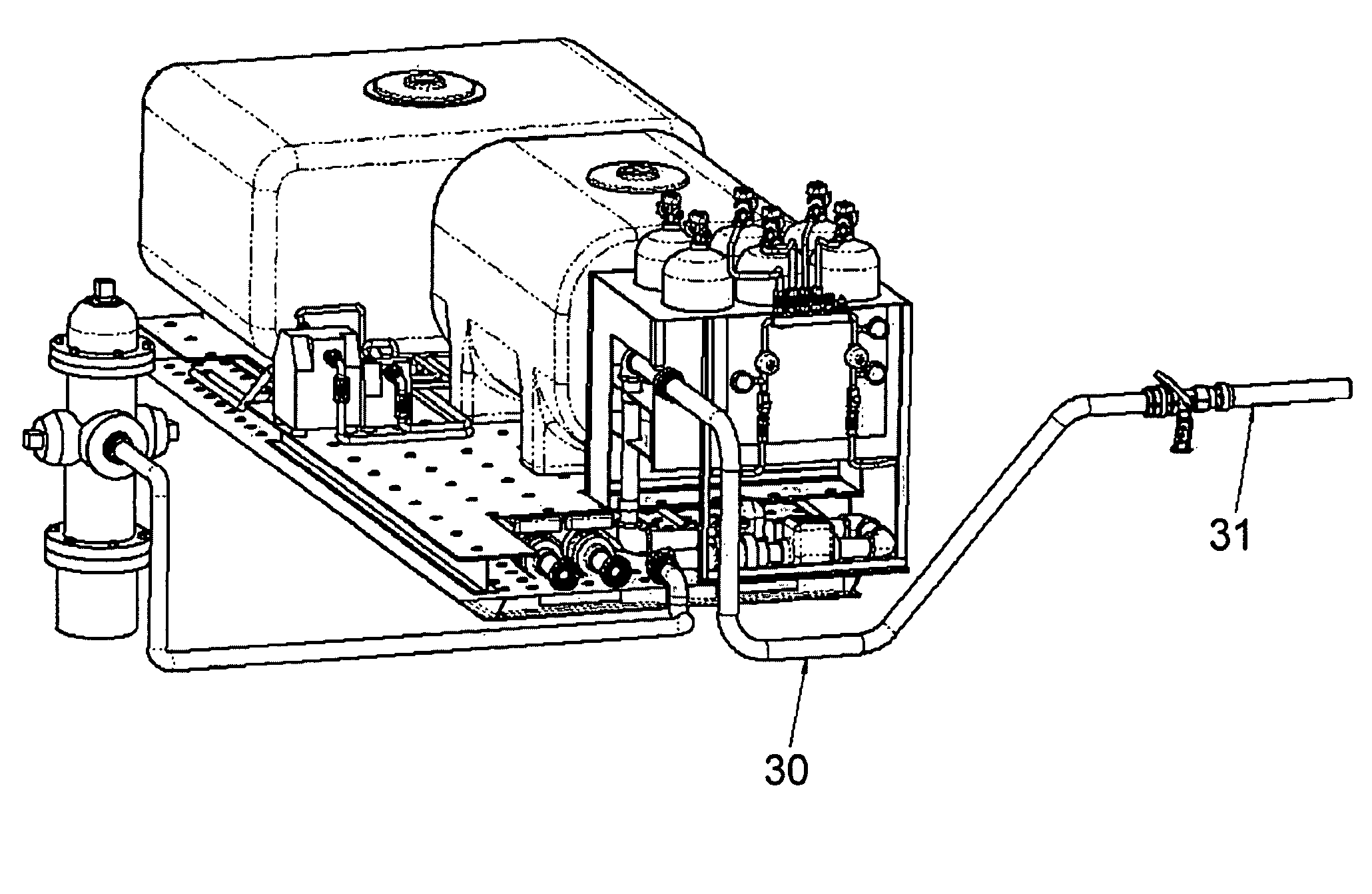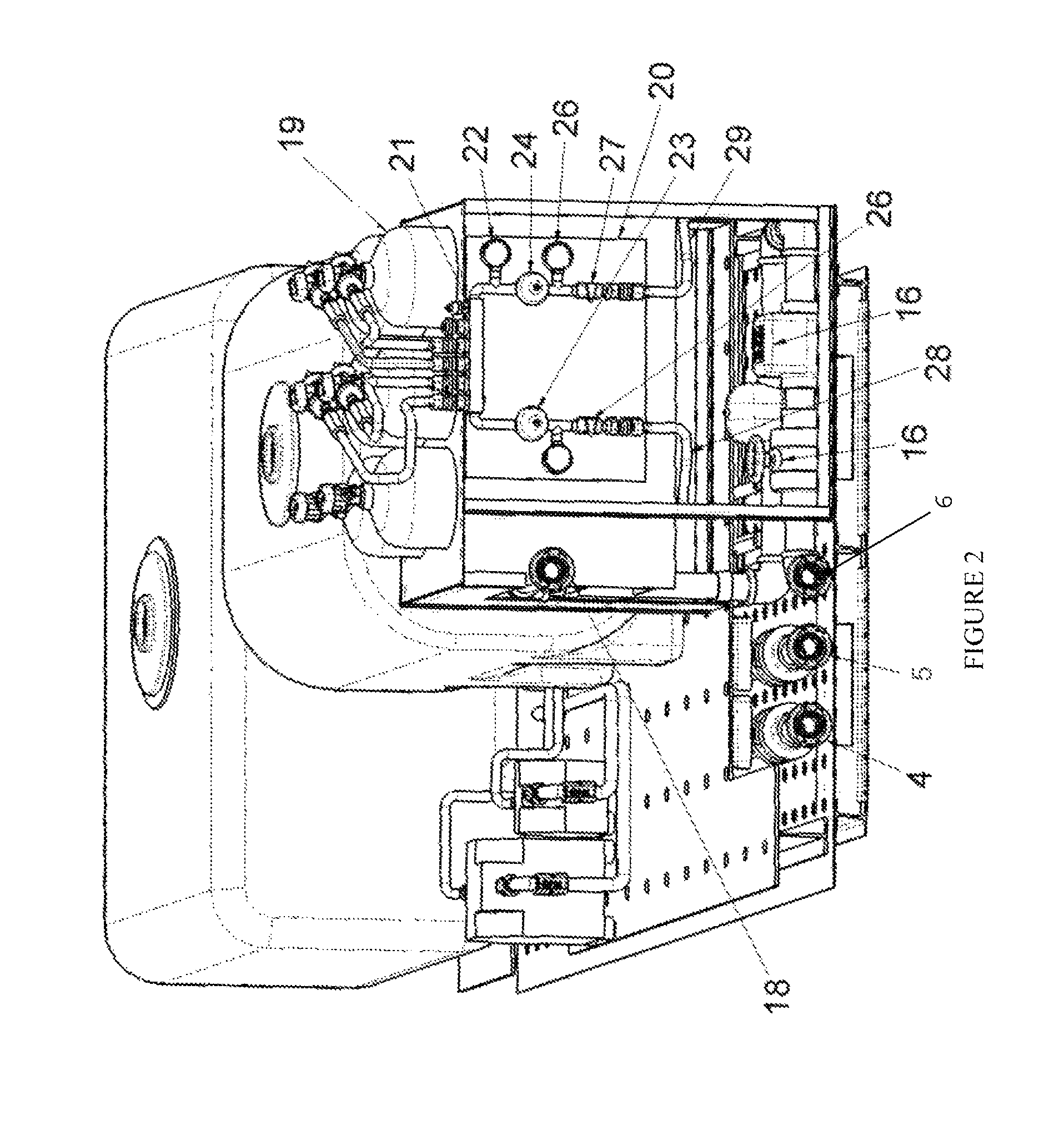Method of, and apparatus for the dispensing of decontaminants and fire suppressant foam
a technology of decontaminant foam and dispensing equipment, which is applied in the field of chemical, biological, radiological and nuclear decontaminant foam dispensing equipment, can solve the problems of limited ability of one military or civil service to work jointly with another, large-scale decontaminant dispensing systems that are not designed with the capability of discharging fire suppressant foam, and limited the ability of one military or civil service to work together
- Summary
- Abstract
- Description
- Claims
- Application Information
AI Technical Summary
Benefits of technology
Problems solved by technology
Method used
Image
Examples
Embodiment Construction
[0018]An exemplary apparatus for implementing the invention will be described with respect to the embodiments appearing in FIGS. 1-5. A partial parts list of the components used in these embodiments is summarized in the following list:
[0019]
Decontaminant Dispenser Materials ListITEMDESCRIPTION1PALLET2TANK “A”3TANK “B”4FILL PIPE “A”5FILL PIPE “B”6INLET LINE7PUMP “A”8PUMP “B”9SUCTION HOSE “A”10SUCTION HOSE “B”11DISCHARGE HOSE “A”12DISCHARGE HOSE “B”13FLOW METER-DISCHARGE HOSE “A”14FLOW METER-DISCHARGE HOSE “B”15FLOW CONTROL VALVE16FLOW METER17STATIC MIXER18OUTLET LINE19AIR CYLINDER20CONTROL PANEL21MANIFOLD22AIR PRESSURE GAUGE-FIRST STAGE23PRESSURE REGULATOR-AIR LINE “A”24PRESSURE REGULATOR-AIR LINE “B”25AIR PRESSURE GAUGE SECOND STAGE26SHUT OFF VALVE-AIR LINE “A”27SHUT OFF VALVE-AIR LINE “B”28AIR LINE “A”29AIR LINE “B”301½″ HOSE31NOZZLE
[0020]Referring to FIGS. 1-4, in the event of a chemical or biological decontamination requirement the decontaminant dispenser would be prepared for op...
PUM
 Login to View More
Login to View More Abstract
Description
Claims
Application Information
 Login to View More
Login to View More - R&D
- Intellectual Property
- Life Sciences
- Materials
- Tech Scout
- Unparalleled Data Quality
- Higher Quality Content
- 60% Fewer Hallucinations
Browse by: Latest US Patents, China's latest patents, Technical Efficacy Thesaurus, Application Domain, Technology Topic, Popular Technical Reports.
© 2025 PatSnap. All rights reserved.Legal|Privacy policy|Modern Slavery Act Transparency Statement|Sitemap|About US| Contact US: help@patsnap.com



